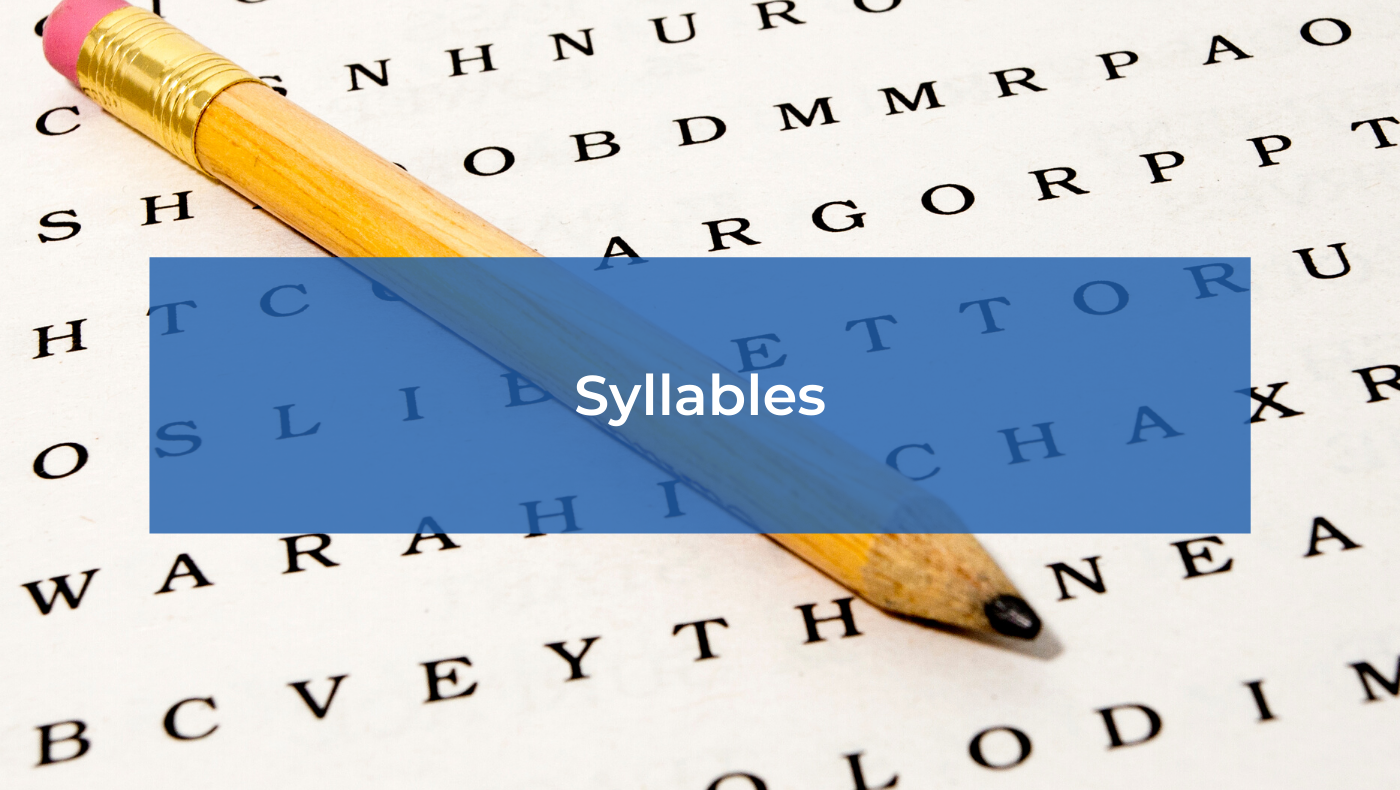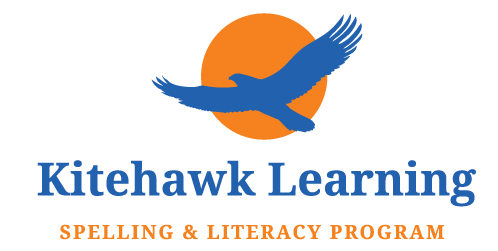
Syllables are the parts of a word that are spoken as a single unit, which together make up a word.
A good understanding of syllables is an important skill that students can use to learn the spelling of long, complicated words. Breaking a word into syllables helps a student memorise the spelling of a word.
Don’t get hung up about exactly the exact placement of a syllable break. The number of syllables is more important than identifying the exact syllable breaks. Most dictionaries will show the syllables in the word. Different conventions are used. The Kitehawk Program follows the International Phonics notation. Here doubled consonants are not separated as they make only one sound in speech e’g’, ca/ttle. The Merriam Webster dictionary usually splits doubled consonants e.g., cat / tle. Either form of notation is suitable for breaking a word into syllables.
There are many techniques used to learn how to break syllables into words.
Some teachers call syllables ‘jaw droppers’. If you cup your hand under your jaw, the jaw will drop each time a syllable is spoken. The jaw drops because there is a vowel sound in each syllable. When breaking words into syllables, the students can clap each of syllables as they say the word Another method is to sing the word, because when we sing a word we naturally break words into syllables. Syllables occur in all languages and can be taught in local languages. For example, the word ‘kangaroo’ from Western Desert Aboriginal language is ‘marlu’, which has two syllables ‘ mar / lu ‘.
Rules for Syllables:
1. Every syllable has a vowel or vowel sound.
The y in funny makes the long /ee/ vowel sound. The y in sky makes the long /igh/ vowel sound.
Breaking a word into syllables is not an exact science. There can be more than one answer. (e.g, evolution: ev-ol-u’-shun, e-vo-lu’-shun).
The important point is the number of syllables is the same.
There are different ways of pronouncing words and writing syllables. All have merit and all are useful.
(e.g., billycan: bi / lly / can, bil / ly / can, bill / y / can)
Note each syllable has a vowel sound. Either way of breaking the word into syllables is OK for teaching purposes. I prefer the former example because it fits the next rule about breaking double consonants.
- A general rule break syllables before or after doubled consonants (e.g., ca / ttle, sci/ ssors, ye / llow, etc).
- Compound words, prefixes and suffixes are usually separated as syllables (un / tie, care / ful, pass / word)
Some larger dictionaries break words into syllables. Some show the separation of syllables with dots (e.g., vo٠cab٠u٠lar٠y which has five syllables) others use a ‘swinging apostrophe’..
- A single consonant between two vowels goes with the second vowel if the first vowel is long. (e.g., o / val, i / de / a, ti / ger, to / tal, etc.) See Unit 3-13.
- Words with two consonants between two vowels are divided into syllables between the consonants. See Unit 3-15.
Example: p e r٠ s o n c o m ٠ p a s s p r o b ٠ l e m
v c ٠ c v v c ٠ c v v c ٠ c v
Pronunciation
The stress mark shown in words in the dictionary should not be confused with syllables. The stress marks in a dictionary show where the emphasis is placed in a word. The main stress or accent is shown by a mark usually before the stressed vowel.
For example in the word vo ‘cab u lar y – the dictionary shows the stress in pronunciation is on “ ‘cab “ – in the second syllable.
